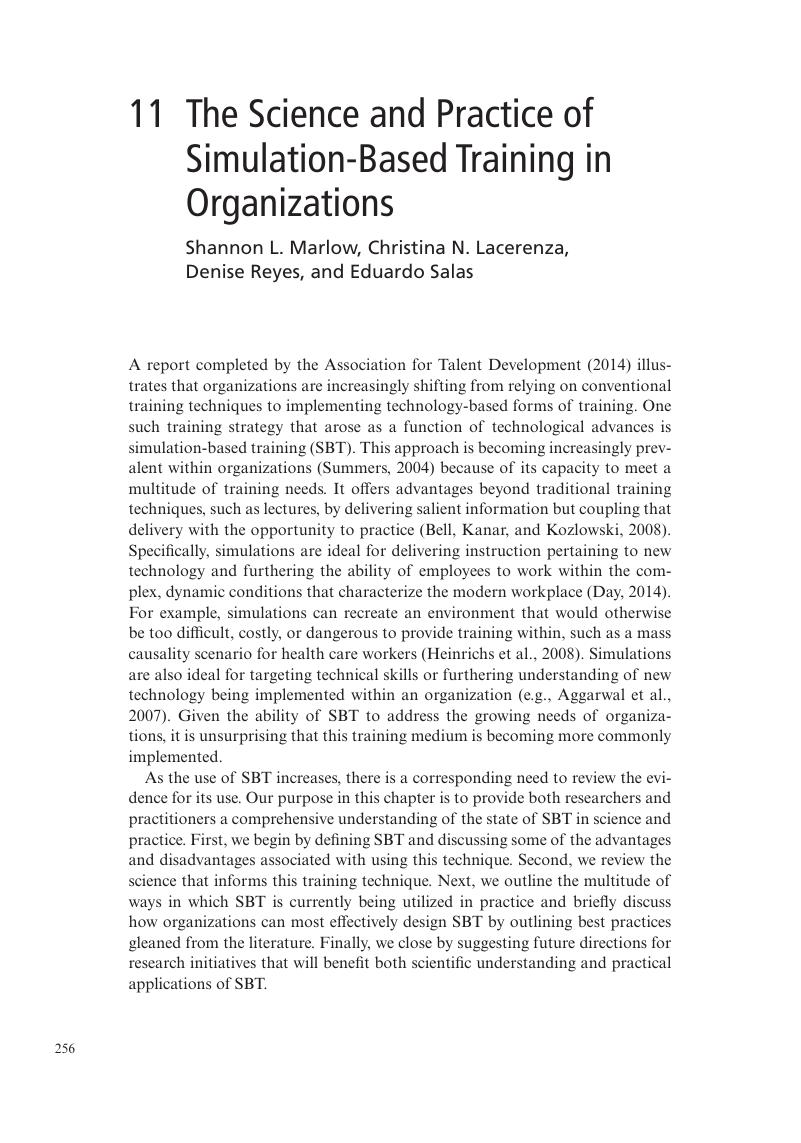Book contents
- The Cambridge Handbook of Workplace Training and Employee Development
- The Cambridge Handbook of Workplace Training and Employee Development
- Copyright page
- Dedication
- Contents
- Figures
- Tables
- Contributors
- Miscellaneous Frontmatter
- Preface
- 1 Introduction and Overview
- Part I Fundamental Issues in Learning and Transfer
- Part II Understanding the Learner
- Part III Designing the Intervention
- 9 Enhancing Training Transfer by Promoting Accountability in Different Work Contexts
- 10 Building Deep Specialization through Intentional Learning Activities
- 11 The Science and Practice of Simulation-Based Training in Organizations
- 12 Augmented Reality Systems in Training
- 13 One (Lesson) for the Road? What We Know (and Don’t Know) about Mobile Learning
- 14 Time and Thinking
- 15 Developing Latino Talent
- Part IV Special Topics
- Part V Workplace Learning from Other Lenses
- Index
- References
11 - The Science and Practice of Simulation-Based Training in Organizations
from Part III - Designing the Intervention
Published online by Cambridge University Press: 30 October 2017
- The Cambridge Handbook of Workplace Training and Employee Development
- The Cambridge Handbook of Workplace Training and Employee Development
- Copyright page
- Dedication
- Contents
- Figures
- Tables
- Contributors
- Miscellaneous Frontmatter
- Preface
- 1 Introduction and Overview
- Part I Fundamental Issues in Learning and Transfer
- Part II Understanding the Learner
- Part III Designing the Intervention
- 9 Enhancing Training Transfer by Promoting Accountability in Different Work Contexts
- 10 Building Deep Specialization through Intentional Learning Activities
- 11 The Science and Practice of Simulation-Based Training in Organizations
- 12 Augmented Reality Systems in Training
- 13 One (Lesson) for the Road? What We Know (and Don’t Know) about Mobile Learning
- 14 Time and Thinking
- 15 Developing Latino Talent
- Part IV Special Topics
- Part V Workplace Learning from Other Lenses
- Index
- References
Summary

Information
- Type
- Chapter
- Information
- Publisher: Cambridge University PressPrint publication year: 2017
References
Accessibility standard: Unknown
Why this information is here
This section outlines the accessibility features of this content - including support for screen readers, full keyboard navigation and high-contrast display options. This may not be relevant for you.Accessibility Information
- 6
- Cited by
